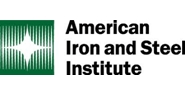Analysis

October 30, 2018
AISI Supports SAFE Approach to Vehicle Emissions
Written by Tim Triplett
The American Iron and Steel Institute continues to support the Trump administration’s plan to ease vehicle fuel economy and emissions standards. In a submission to the EPA during the public comment period that ended Oct. 26, AISI expressed its support of the general direction of the proposal, which would establish a standard that balances the priorities of affordability, safety, jobs and the environment, said President and CEO Thomas J. Gibson.
The auto industry has struggled to meet the current corporate average fuel economy (CAFE) and greenhouse gas (GHG) emission standards set under the Obama administration. The Trump administration’s Safer Affordable Fuel-Efficient (SAFE) Vehicles Proposed Rule for Model Years 2021-2026 would amend existing CAFE and tailpipe carbon dioxide emissions standards for passenger cars and light trucks and establish new standards covering model years 2021 through 2026. The proposal basically would freeze the model year 2020 standards through model year 2026. If adopted, administration officials maintain the change would save more than $500 billion in societal costs, while still reducing highway fatalities and safeguarding the environment—claims environmental groups and other opponents strongly dispute.
“We believe that an overly stringent standard that optimizes tailpipe-only GHG emissions and fuel economy enhancements to the exclusion of other necessary and important design factors would result in a host of negative outcomes, such as increased costs to consumers and negative effects on the environment, increased safety design challenges and negative job impact,” said Gibson.
AISI advocates for a lifecycle view of greenhouse gas emissions, which takes into account the environmental costs of producing the raw materials that go into vehicles. Aluminum production consumes far more electricity than steel, AISI is quick to point out.
Gibson expressed concern about any outcomes that could force automakers into choosing alternative materials that are costlier and have the potential to result in higher overall GHG emissions compared to lightening vehicles with advanced high-strength steel. “We believe that steel will continue to be a critical component for automakers to meet the final requirements,” he said.
The administration’s proposal seeks to establish a new 50-state fuel economy and carbon dioxide emissions standard. At present, California has the authority to set its own standards, which are stricter than the federal rules. “We are strong advocates for one national program of standards, as we believe this is best for automakers, the automotive supply chain, including the steel industry, in addition to consumers and the economy as a whole,” Gibson said.







